How to use Every Support Item
Set 9.5 has been out for a little bit now, and the new item changes have been fun to explore. The new Support Item system isn’t something you’ll interact with every game, but it can pop up occasionally.
If you find yourself picking between different support items, it can be quite daunting with all the options. In this guide, I’ll go over every Support Item, and tips on how to best utilize them.
Let’s get right into the guide.
TFT Support Items
For this guide, I’ll be separating the Support items into a few categories:
- Overall Strong
- Situationally Strong
- Niche
Keep in mind that these categories and item descriptions are subject to change with patches. This should be seen more as a surface level analysis, rather than the truth for every patch and metagame. For an updated look at the items and tiers, check out our Support Item Page.
Shroud of Stillness – Overall Strong
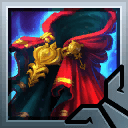
Combat Start: Shoot a beam that 30% Mana Reaves enemies. Your team gains 60 Health.
Mana Reave: increase maximum Mana until the next cast.
In the past, Shroud of Stillness was an item that was frequently built in the late game with extra items. This is because Mana Reave is a very powerful effect that can be the difference between winning or losing a fight.
Now that Shroud is a Support item, it’s become one of the best picks. It will be a strong item regardless of what team comp you are playing, and it even gives your team 60 bonus Health. On an 8 unit board, that’s an extra 480 Health. While that may not seem like much, it can be the difference in some fights.
Overall, Shroud is a safe pick that can go onto any team comp. The item also only gets better the more you scout and move it around for optimal positioning.
Zephyr – Overall Strong
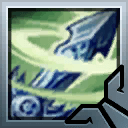
Combat start: Summon a whirlwind on the opposite side of the arena that removes the closest enemy from combat for 5 seconds. Your team gains 8% Attack Speed.(Ignores crowd control immunity.)
Zephyr is another item in a similar situation to Shroud. While Shroud is easier to get value from, Zephyr is higher risk higher reward. If you can snipe the enemy carry, you can win fights you have no business winning. Conversely, if you hit a random support unit, the item won’t do much for you.
However, now that Zephyr is a Support item, it now grants bonus Attack Speed to the entire team. Attack Speed is a stat that almost every team comp can benefit from. AD comps obviously like Attack Speed, but it’s also beneficial for AP comps as your casters can gain mana faster.
Overall, Zephyr is another strong universal item, but getting the most value from it is more difficult than Shroud of Stillness.
Obsidian Cleaver – Overall Strong
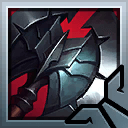
Attacks and Abilities 30% Shred and 30% Sunder enemies for 15 seconds. Grant your team 10% AD and 10 AP.
Shred: Reduce Magic Resist Sunder: Reduce Armor
Obsidian Cleaver is another item that is quite powerful and beneficial for many team comps. However, this hinges on the fact that you don’t have another source of Shred/Sunder on your team already.
If you’re playing a trait like Freljord, Obsidian Cleaver loses a lot of value. The same applies if you have items like Last Whisper, Ionic Spark, or Statikk Shiv.
The strength of Obsidian Cleaver is that you can scale your main carries damage without taking up an item slot on them. Simply put the item onto a secondary carry or utility unit next to your carry to Shred/Sunder the correct target.
Randuin’s Omen – Situationally Strong
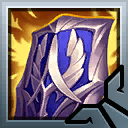
Combat start: Grant 30 Armor and 30 Magic Resistance to the holder and their adjacent allies.
Randuin’s Omen is a strong item that can give Armor/MR to up to 7 units. (The holder and 6 adjacent allies) This can make your team tankier and survive through enemy damage.
However, to get the most value out of this item, you need to position your units in a clump, which is not always ideal. This makes your team more vulnerable to things like AoE damage or CC.
In most situations, you can get away with positioning only your frontline to get value out of this item. If you move your frontline up, or your backline back to fit more units, it can be more detrimental than beneficial. If your team is mostly comprised of melee units, Randuin’s can be better as your team will naturally spread out to hit enemies.
Needlessly Big Gem – Situationally Strong
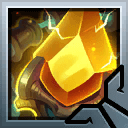
Once per combat: If the holder is alive after 15 seconds of combat, grant 1 gold per 2 living allies, and each living ally deals 30% more damage.
Needlessly Big Gem is an item that is quite difficult to make the most out of. The extra gold you gain from it is most valuable in the early game where you can accelerate your economy.
However, ensuring your unit stays alive for 15 seconds in the early game is quite difficult sometimes, especially if you are lose streaking. Conversely, if you’re win streaking with the item, you can make a very strong economy while also saving HP.
Overall, it’s a strong item to get both early and late. If your team can survive past 15 seconds, you’ll get a large buff in damage, making it especially strong in teams that are tanky and can stall.
Zeke’s Herald – Situationally Strong
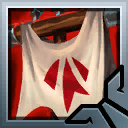
Combat start: Grant 25% Attack Speed to the holder and allies within 2 hexes in the same row.
Zeke’s has been moved from a buildable item to the Support Item category. It’s been reverted to how it was in the past, buffing up 5 allies in a row.
In general, Zeke’s will be good on AD comps where you want to buff up the Attack Speed of your carries. However, like Randuin’s, placing your carries in a line can be dangerous positioning. Most team comps want to spread out their carries in order to avoid dangerous abilities.
It can also be difficult to get value out of buffing 5 units. Any buff is welcome, but you usually only care about 2 or 3 units to really buff up. Like Randuin’s, it can be good to only buff up a few units to have a safer positioning than try to get the most value out of Zeke’s.
Virtue of the Martyr – Situationally Strong
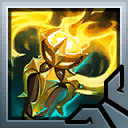
Heal all allies for 7% of their max Health every 5 seconds. When the holder dies, increase the heal amount to 14% and continue the duration for 10 seconds.
Virtue of the Martyr is another incredibly powerful item. A board wide heal is like Redemption on steroids. This item can be extremely effective on team comps with tanky units like Bruisers or Juggernauts.
Furthermore, you can also place Virtue on a unit that will die quickly. This will make it so the effect doubles, but only lasts for 10 more seconds. Even still, this can be more powerful than keeping the effect for longer as it means your opponent will have a harder time taking down your units.
Overall, Virtue is a solid item, but it really shines on specific comps.
Zz’Rot Portal – Situationally Strong
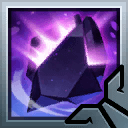
Combat start: Summon a large Voidspawn that Taunts nearby enemies.
In terms of usefulness, Zz’Rot Portal is technically a Support Item that can fit onto any board. However, I wouldn’t consider it on the same level as items like Shroud or Zephyr.
Having Zz’Rot simply gives you more frontline, which can be very useful. It’s more useful on team comps that are lacking frontline, like Sorcerers. The extra frontline can be the difference between an extra cast on your carry, or having your enemy run you over.
If you’re playing a comp with a strong frontline already, Zz’Rot loses a lot of value.
Chalice of Power – Situationally Strong
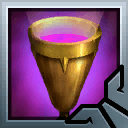
Combat start: Grant 18 Ability Power and 10 Mana to the holder and allies within 2 hexes in the same row.
Chalice basically follows the same situation as Zeke’s. It’s good in AP comps, but has the same weakness of potentially making your positioning worse.
There’s not too much to say about this one, as it’s mostly copy paste from Zeke’s Herald, except for AP comps.
Aegis of the Legion – Situationally Strong
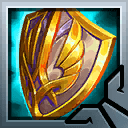
Combat start: Empower all allies in the columns behind the holder, granting 30% Attack Speed and 15 Armor and Magic Resist for 8 seconds.
Aegis of the Legion provides a very powerful effect. Zeke’s only grants 25% Attack Speed, but Aegis provides 30 while also granting Armor/MR.
My main gripe with Aegis is that positioning can be difficult, similar to Zeke’s. You are able to place it on a frontline unit, but you will always want your carry units to be directly behind them, which is not always ideal.
Even still, in terms of it’s effect, it’s extremely powerful. You won’t really benefit from this item as much in AP comps, but it can still be used if there’s nothing better.
Banshee’s Veil – Niche
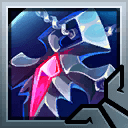
Combat Start: Grant the holder and all allies within 1 hexes in the same row immunity to crowd control for 18 seconds.
Banshee’s Veil used to be buildable in the game (Banshee’s Claw), but it was replaced by Guardbreaker. CC Immunity can be very strong, especially for short range carries like Fiora or Nilah, but the effect has become less popular with players.
Banshee’s Veil makes it easy to position your carry as you don’t need to worry about CC, only damage. However, in an ideal situation, you can use your positioning to try and avoid CC on backline carries. Ideally, having a different Support Item and positioning better will be better for your team than Banshee’s Veil.
Locket of the Iron Solari – Niche

Combat start: The holder and allies within 2 hexes in the same row gain a 250 damage shield and 20 Armor and 20 Magic Resist for 20 seconds.
Locket is quite a universal item, as every team can benefit from more frontline stats. Similar to Zz’Rot, the item loses value if you already have a strong frontline, but many other comps can utilize Locket well.
Even if you only have 4 frontline units, the item can get a lot of value. (1000 HP and 80 Armor/MR combined bonus)
While players will usually prioritize other Support Items, Locket is still a very universal item, making it a solid pick up if there’s no better options.
The main drawback comes if you don’t have 4 or more units in your frontline. If you only have 2 or 3 frontline units, Locket becomes much worse.
Conclusion
Overall, the addition of Support items brings a new layer to items to consider. While you won’t get these items every game, having a general idea of what to get or what’s available is important.
If your team is lacking Shred/Sunder, maybe you should consider taking the Augment that grants a Support Item to look for Obsidian Cleaver. Or, if you don’t have better augment options, you can look at Support Items as a safe pick, as there’s likely to be one that will benefit your team decently.
Hopefully this guide helped you, and good luck on your climb!
To learn about the latest new TFT Set, head to our all-in-one Teamfight Tactics Set 9.5 reveal page that covers all champions, synergies, and more!
Subscribe to our newsletter:
Don’t miss out on all of the latest TFT content!
 Download APP
Download APP Collapse
Collapse